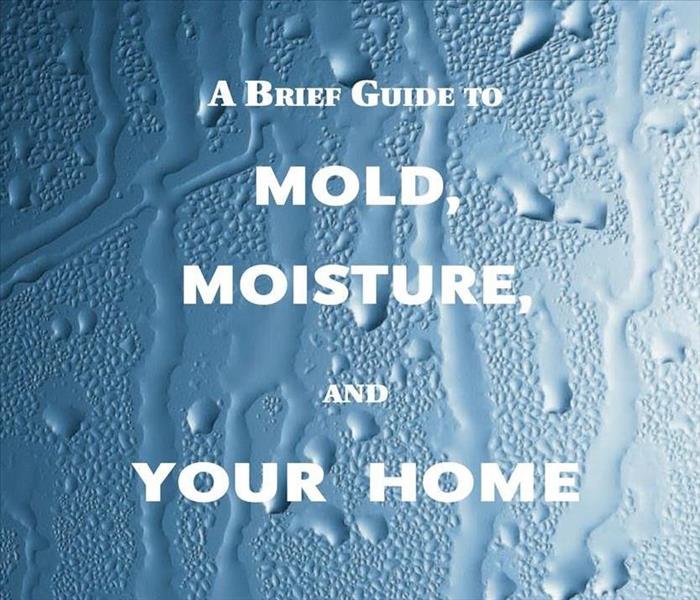THE EPA has Produced a Helpful Mold Guidebook
11/7/2022 (Permalink)
Mold, Moisture, and Your Home
The EPA has published a helpful mold guide for homeowners to understand why mold might grow in their homes and how to remove it. The booklet, Mold, Moisture, and Your Home is available as a PDF download from the EPA.
In this article, we have quoted several critical areas of information from the EPA mold guide to provide you with a quick review of the information. However, we recommend that you download and read the entire booklet!
- “Molds are usually not a problem indoors unless mold spores land on a wet or damp spot and begin growing.”
- “The mold spores will not grow if moisture is not present. Indoor mold growth can and should be prevented or controlled by controlling moisture indoors. If mold grows in your home, you must clean up the mold and fix the water problem.”
- “Who should do the cleanup depends on several factors… one consideration is the size of the mold problem? If the moldy area is less than about 10 square feet (less than roughly a 3 ft. by 3 ft. patch), in most cases, you can handle the job yourself, following the guidelines below.”
The EPA booklet warns homeowners against self-do-it-cleaning if the mold source was contaminated with sewage if they suspect the HVAC system is contaminated, and if there is a quantity of mold of more than 10 square feet. The booklet then provides two pages of instructions about how to safely and adequately clean moldy surfaces. The instruction discusses how to safely use bleach (if, and when it may be needed).
- Avoid breathing in mold or mold spores. To limit your exposure to airborne mold, you may want to wear an N-95 respirator, available at many hardware stores and from companies that advertise on the Internet.
- Wear gloves. Long gloves that extend to the middle of the forearm are recommended. When working with water and a mild detergent, ordinary household rubber gloves may be used. If you use a disinfectant, a biocide such as chlorine bleach, or a robust cleaning solution, you should select gloves made from natural rubber, neoprene, nitrile, polyurethane, or PVC.
- Wear goggles. Goggles that do not have ventilation holes are recommended. Avoid getting mold or mold spores in your eyes.
- Cleanup and Biocides. Biocides are substances that can destroy living organisms. Using a chemical or biocide that kills organisms such as mold (chlorine bleach, for example) is not recommended as a routine practice during mold cleanup. There may be instances, however, when professional judgment may indicate its use.
The EPA booklet asks an important question, how do I get rid of mold? Here is their answer:
- "It is impossible to get rid of all mold and mold spores indoors; some mold spores will be found floating through the air and in house dust. The mold spores will not grow if moisture is not present. Indoor mold growth can and should be prevented or controlled by controlling moisture indoors. If mold grows in your home, you must clean up the mold and fix the water problem. If you clean up the mold but don’t fix the water problem, then, most likely, the mold problem will come back."
We can’t say it enough about, Mold, Moisture, and Your Home. It is an outstanding resource. We strongly encourage you to get a personal copy.
Please, understand SERVPRO of El Centro is an expert in resolving moisture and mold issues in homes and public buildings.






 24/7 Emergency Service
24/7 Emergency Service
